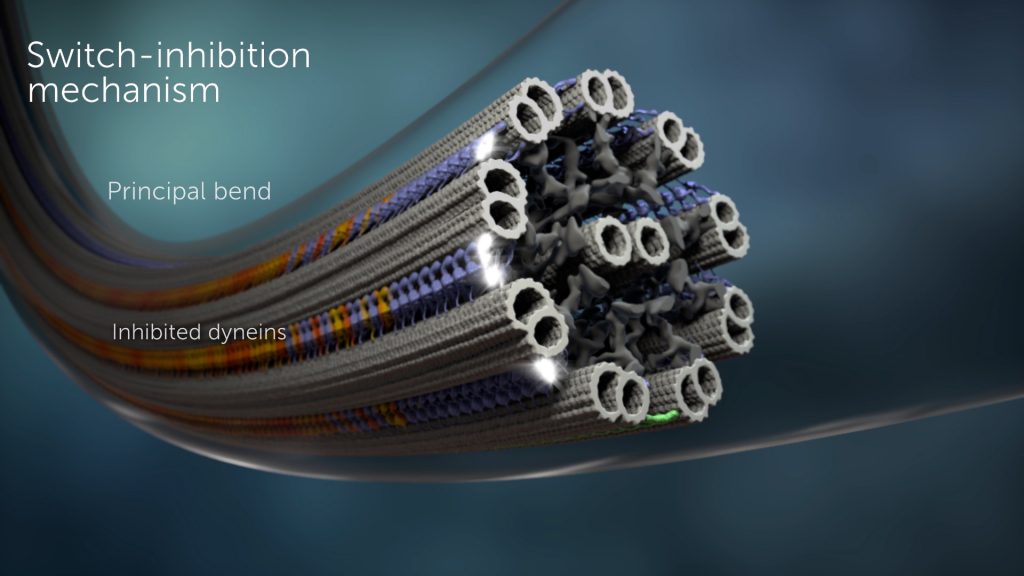The XVIVO team is proud of a recent project in collaboration with Dr. Daniela Nicastro , Associate Professor at the University of Texas Southwestern Medical Center. Dr. Nicastro and her research colleagues had completed some complex and ground-breaking research into how cilia and flagella generate their whip-like motion, and they asked XVIVO to help them visualize the results.
Cilia and flagella are hair-like structures on cells that cause fluid flow. (The tail of a sperm cell is a flagellum.) They are important for normal physiological function, and impaired cilia are implicated in several diseases, such as primary ciliary dyskinesia and retinal degeneration.
Dr. Nicastro’s group used a novel technique to visualize the molecular machines inside flagella to better understand how they work and, in the process, they confirmed a previously unproven hypothesis. Their research showed that flagella get their whip-like motion by a coordinated activation of motor proteins on one side of the flagella and inhibition of motor proteins on the opposing side.
XVIVO was tasked with taking the research results and creating a 3D animation that helped viewers better appreciate how the motor proteins in flagella work. The final animation steps through the process of flagellar beating by diving into the flagella structure and bringing the research to life.
A peer-reviewed article containing the research results has just been published online in Science and will be included in a forthcoming print issue of the journal.
Dr. Nicastro and her team “are so thankful to the XVIVO staff for bringing our flagellar motility model to life! The entire process was fantastic, and your creative input was invaluable. I’m constantly receiving enthusiastic comments about your video.”
It was a great pleasure working with Dr. Nicastro on this project and being challenged to concisely visualize the intricate data she presented.
